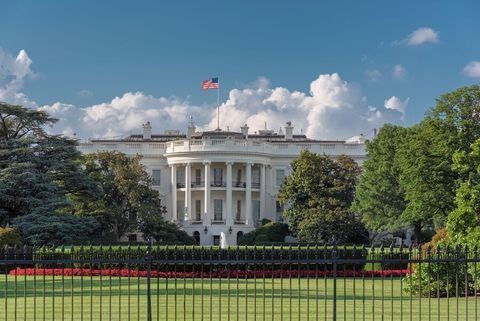Small Changes to NEPA Rules Expected to Have Major Impacts on Federal Environmental Reviews of Infrastructure Projects
Client Alert | 3 min read | 04.20.22
On April 20, the Biden Administration published final changes to the rules governing how federal agencies consider the environmental impacts of their proposed actions, returning to previous standards that required consideration of indirect and cumulative effects of a proposed action. Although the rule changes may appear minimal, encompassing modifications to two specific regulatory subsections and updates to two definitions, the changes could be significant in how agencies consider impacts on environmental justice communities or effects of climate change from proposed federal actions, including federal agency authorizations and approvals for energy, transportation, and other infrastructure projects.
Under the National Environmental Policy Act (NEPA), federal agencies are required to prepare “a detailed statement” – known as an environmental impact statement – to accompany proposals for federal legislation and other major federal actions that significantly affect the quality of the human environment, including many kinds of funding and permitting actions. According to the NEPA statute, the environmental impact statement must describe the environmental impact of the proposed action, any adverse environmental effects which cannot be avoided, and alternatives to the proposed action, among other information, and must be prepared after consulting with any other federal agencies with relevant expertise. 42 U.S.C. § 4332(2)(C).
The White House Council on Environmental Quality (CEQ) first issued regulations implementing NEPA in 1978, and those regulations, codified at 40 C.F.R. Parts 1500-1508, largely remained untouched for 40 years. Agency decisions on whether to conduct an environmental impact statement or to perform a more limited review (or no environmental review at all), decisions to include or exclude certain issues within the scope of a review, and the consideration of effects such as climate change and alternatives to the proposed action have been the subject of frequent litigation over the decades.
During the Trump Administration, CEQ undertook a comprehensive rewrite of the NEPA regulations, including changing the definition of “effect” to remove reference to indirect effects, and clarifying that effects must be reasonably foreseeable and have a reasonably close causal connection to the proposed action and to eliminate the need to consider cumulative impacts.
CEQ took today’s action in response to Executive Order 13990 (Protecting Public Health and the Environment and Restoring Science to Tackle the Climate Crisis), which President Biden issued the day he took office, calling on agency heads to suspend, revise or rescind prior agency actions that were inconsistent with the policies articulated in the EO. The revised NEPA rule includes the following changes:
- Revises section 1502.13 (Purpose and Need) to remove language that the Trump CEQ had added requiring agencies to base their review of a proposed action and alternatives on the agency’s statutory authority and the needs and goals of the project applicant.
- Revises section 1507.3 (Agency Procedures) to remove language that said in situations where an agency-specific procedure conflicted with the NEPA regulations issued by the Trump CEQ, the CEQ regulations would supersede the agency procedures unless there was a clear conflict with the requirements of another statute.
- Revised section 1508.1(g) (Definition of Effects) to remove language added by the Trump CEQ that effects must be reasonably foreseeable and have a reasonably close causal relationship to the proposed action or alternatives, and that a “but for” causal relationship is inadequate to make an agency responsible for an action.
- Revises section 1508.1(z) (Definition of Reasonable Alternatives) to remove language added by the Trump CEQ that a reasonable alternative must also meet the goals of the applicant, in addition to being technically and economically feasible and meeting the purpose and need for the proposed action.
The final rule changes largely mirror the proposal CEQ issued for public comment in October 2021. These changes go into effect May 20, 2022. CEQ has announced plans to make additional changes to the NEPA implementing regulations through a second phase or rulemaking but it remains unclear when additional changes may be forthcoming. Federal agencies that are financing or permitting infrastructure projects can be expected to scrutinize a potential project’s impact on greenhouse gases and climate change and to examine additional alternatives that may not have been originally considered by the project applicant. While the preamble to the final rule states the changes will improve the overall review process for projects and make projects more defensible, project developers can be expected to fear the new rules will add costs, uncertainties, and delays to projects that are already resource-intensive and challenging to get permitted and built.
Contacts
Insights
Client Alert | 7 min read | 12.19.25
In Bid to Ban “Woke AI,” White House Imposes Transparency Requirements on Contractors
In July 2025, President Trump signed Executive Order (EO) 14319, Preventing Woke AI in the Federal Government, to preclude the federal government from procuring artificial intelligence (AI) models that incorporate “ideological biases or social agendas,” including “diversity, equity, and inclusion.” The EO mandates that the federal government purchase only large language models (LLMs) developed according to two “Unbiased AI Principles” — that they be “truth-seeking” and show “ideological neutrality.” To implement these principles, the EO directed the Office of Management and Budget (OMB) to issue guidance.
Client Alert | 19 min read | 12.18.25
2025 GAO Bid Protest Annual Report: Where Have All the Protests Gone?
Client Alert | 7 min read | 12.17.25
Client Alert | 1 min read | 12.17.25





